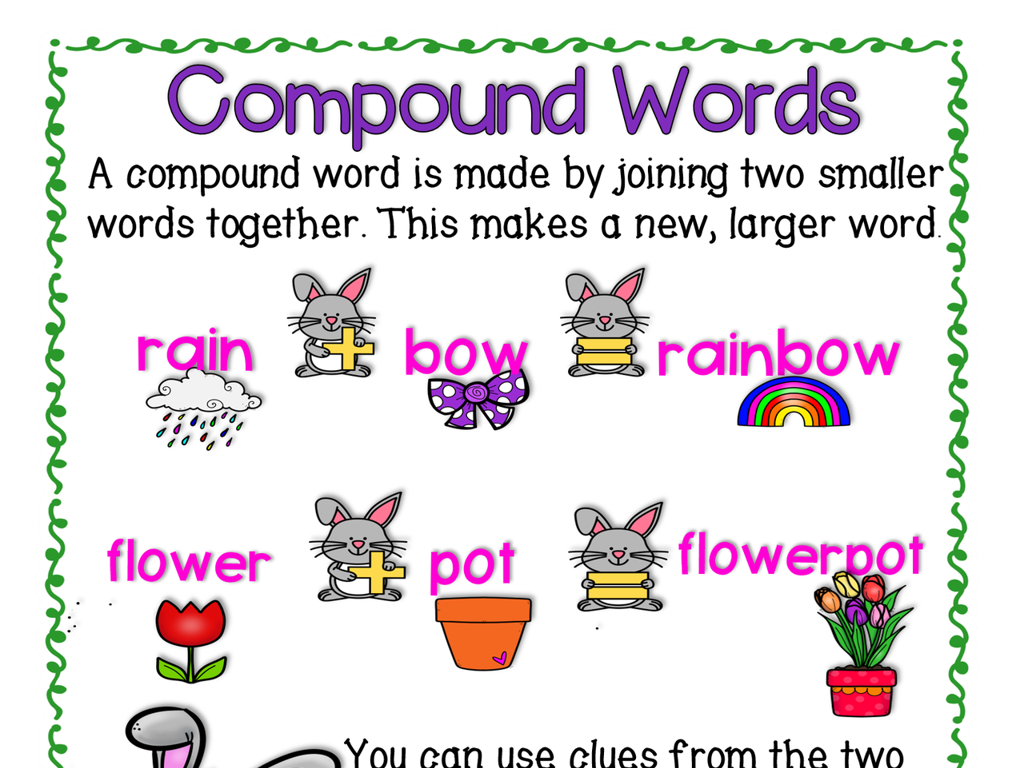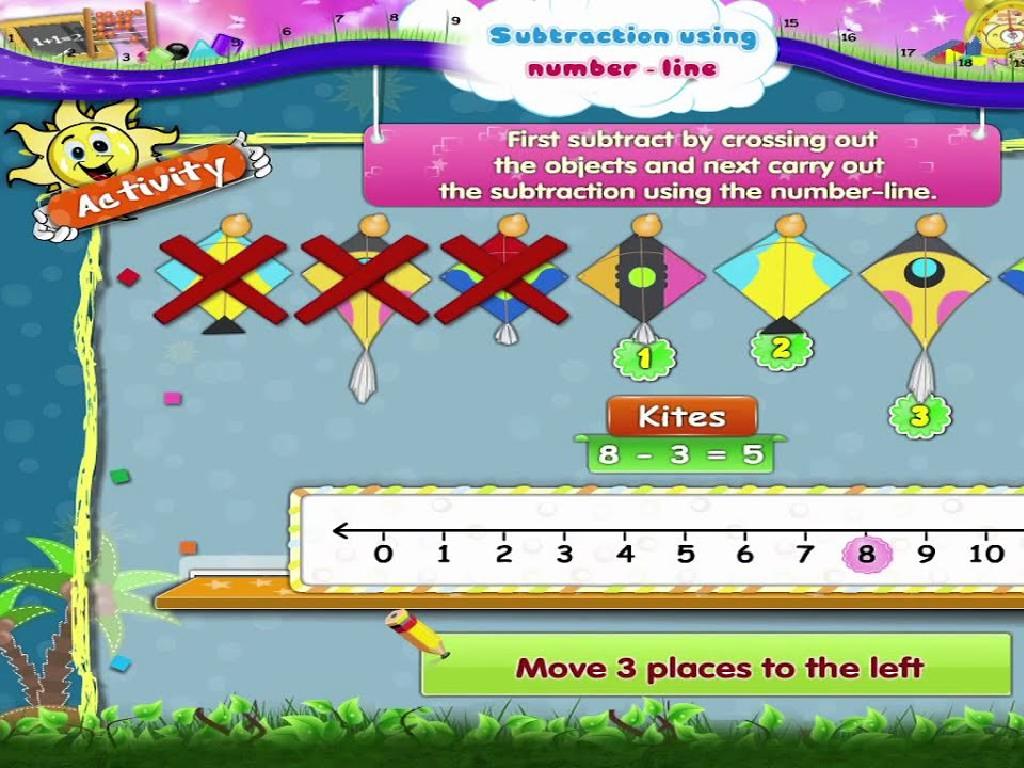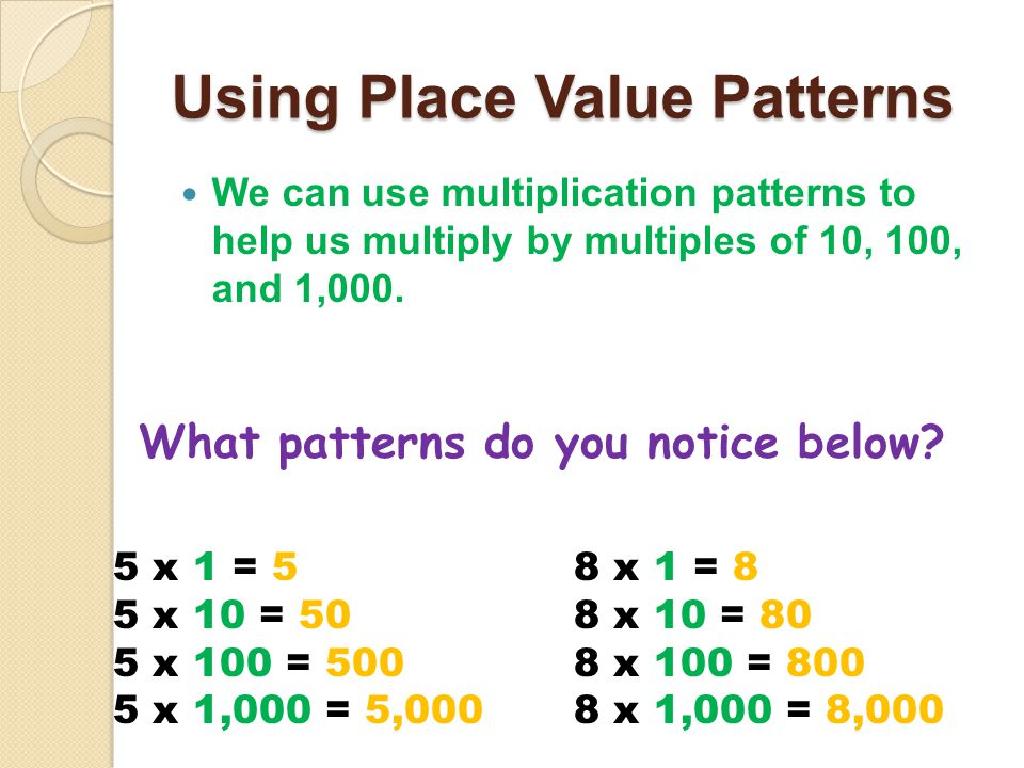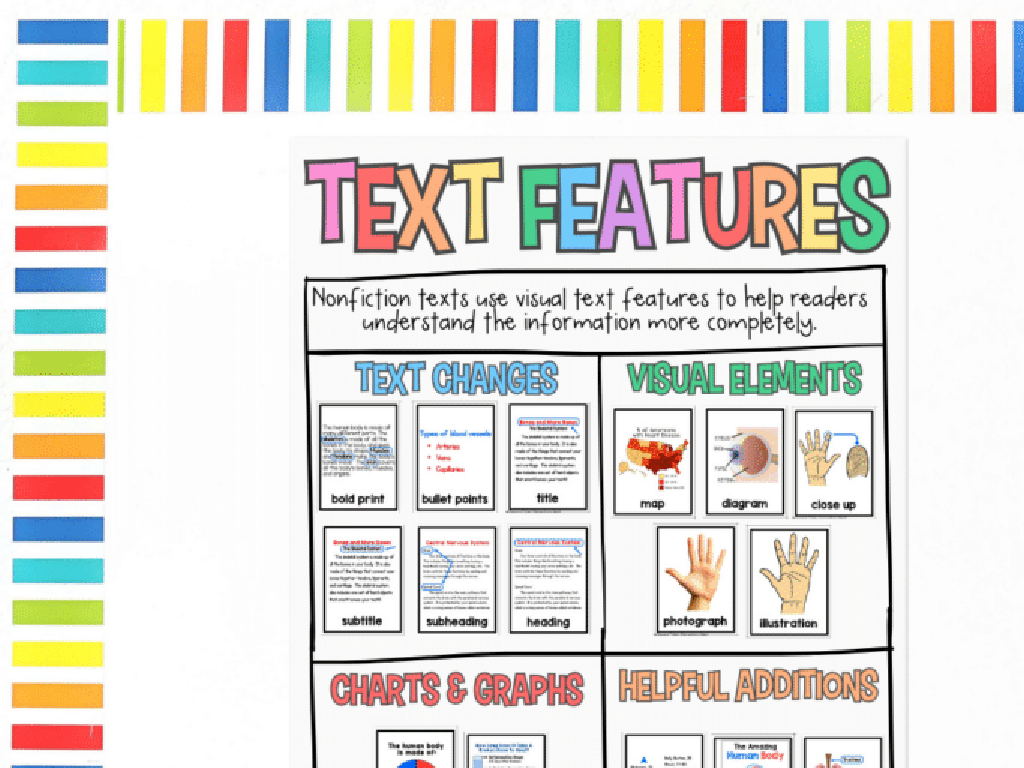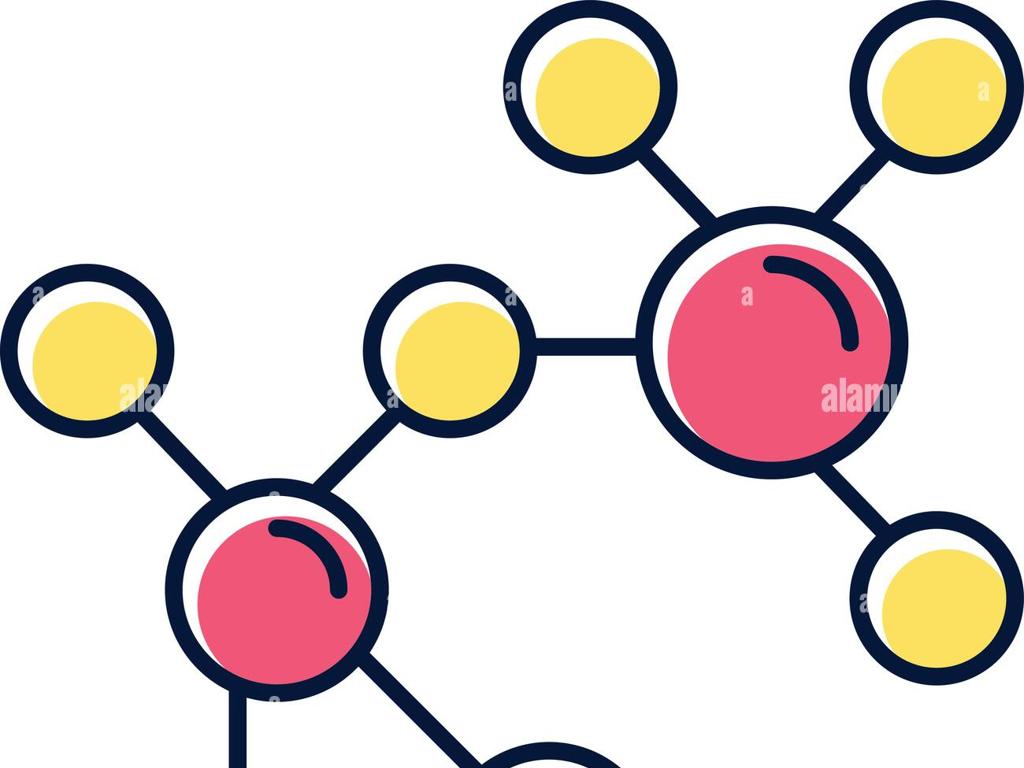Find The Area Of Rectangles And Squares
Subject: Math
Grade: Third grade
Topic: Area
Please LOG IN to download the presentation. Access is available to registered users only.
View More Content
Area Exploration: Rectangles & Squares!
– What does ‘Area’ mean?
– Area is the space inside a shape.
– Area’s role in real life
– Helps in everyday tasks like buying carpet.
– Measuring area of rectangles
– Length x Width gives rectangle’s area.
– Measuring area of squares
– Side x Side gives square’s area.
|
Begin the lesson by explaining the concept of area as the amount of space inside a two-dimensional shape. Use simple language and examples to illustrate the point, such as comparing the area to the space taken up by a piece of paper on a desk. Emphasize the practical importance of understanding area in real-world scenarios, such as determining the amount of paint needed for a wall or the size of a garden. Teach the formulas for finding the area of rectangles and squares, and provide visual aids or manipulatives to help students grasp the concept of multiplying two sides to find the total space inside. Encourage students to think of other examples where they might need to measure area in their daily lives.
Exploring Area: Rectangles and Squares
– Area: size of a surface
How much space is inside a shape on a flat surface.
– Measured in square units
We use square inches (in²) or square feet (ft²) to measure it.
– Example: painting a floor
Think about covering your floor with paint; how much would you need?
– Practice with rectangles and squares
|
Begin the lesson by explaining the concept of area as the amount of space inside the boundary of a flat object. Use familiar examples, such as the floor of their bedroom, to make the concept relatable. Discuss how area is measured in square units, which could be related to the tiles on their floor at home. Use an example of painting a floor to illustrate why knowing the area is practical and important – it helps us know how much paint to buy. Then, transition to practicing finding the area of rectangles and squares, which are shapes they commonly see around them. Provide clear instructions on how to calculate area by multiplying the length by the width for rectangles and squaring the side length for squares.
Finding the Area of a Rectangle
– Area equals length times width
– Length: Measure how long
– The longer side of the rectangle
– Width: Measure how wide
– The shorter side of the rectangle
– Let’s calculate together!
– Use the formula with real measurements
|
This slide introduces the concept of finding the area of a rectangle, which is a fundamental skill in geometry for third-grade students. Start by explaining the formula for the area of a rectangle, which is the product of its length and width. Clarify that the length refers to how long the rectangle is, typically the longer sides, and the width is how wide it is, usually the shorter sides. Engage the students by walking through an example calculation as a class. Use a real-life object, such as a book or a table, to demonstrate how to measure the length and width and then apply the formula to find the area. Encourage students to ask questions and to try calculating the area of objects in the classroom for hands-on practice.
Practice Time: Calculating Area
– Example 1: Rectangle (5 units x 3 units)
– Area = 5 units x 3 units = 15 square units
– Example 2: Rectangle (8 units x 2 units)
– Area = 8 units x 2 units = 16 square units
– Calculate the area of each rectangle
– Remember: Area = Length x Width
|
This slide is designed for students to apply their knowledge of finding the area of rectangles. Start by reviewing the formula for the area of a rectangle (Area = Length x Width). Then, present the two examples and work through them together as a class. For Example 1, multiply the length (5 units) by the width (3 units) to find the area is 15 square units. For Example 2, multiply the length (8 units) by the width (2 units) to find the area is 16 square units. Encourage students to visualize the rectangles and count the unit squares if needed. This will help solidify their understanding of area as the number of square units that cover a shape. After the examples, students can practice with additional rectangles and squares of their own choosing or from a worksheet.
Finding the Area of a Square
– A square has four equal sides
– Area formula: Side x Side
– Area = length of one side squared
– Multiplying a number by itself
– This is also called ‘squaring’ a number
– Let’s calculate a square’s area!
– We’ll use blocks to visualize and calculate
|
This slide introduces the concept of finding the area of a square to third-grade students. Begin by explaining that a square is a special rectangle with all four sides of equal length. Emphasize the simplicity of the area formula for a square, which is just the length of one side multiplied by itself. This is a good opportunity to introduce the concept of ‘squaring’ a number, which is a foundational math skill. To make this interactive, use blocks or tiles to create a visual representation of a square and have the students count to find the area. Encourage the students to practice with different side lengths and to share their findings with the class.
Square Area Practice
– Example 1: Side=4 units
– Calculate area of Example 1
– Area = Side x Side. So, 4 units x 4 units = 16 square units
– Example 2: Side=6 units
– Calculate area of Example 2
– Area = Side x Side. So, 6 units x 6 units = 36 square units
|
This slide is designed to provide students with practice in calculating the area of squares. Start by explaining that the area of a square can be found by multiplying the length of one side by itself. For Example 1, demonstrate that if each side of the square is 4 units, the area is 4 units times 4 units, which equals 16 square units. For Example 2, show that a square with sides of 6 units has an area of 6 units times 6 units, which equals 36 square units. Encourage students to visualize the square as a grid of unit squares to understand how the area represents the space inside the square. Provide additional examples if time allows and ensure students are comfortable with the concept before moving on.
Real-Life Applications of Area
– Area usage in daily life
– Calculate garden space
– How much space for plants?
– Size a sandbox
– How much sand will fit?
– Activity: Design a park
– Draw sections and find each area
|
This slide aims to show students how the concept of area is relevant and useful in everyday situations. By calculating the area, we can determine how much space is needed for a garden or the amount of sand required for a sandbox. The activity encourages students to apply their knowledge creatively by designing their own park and calculating the area of different sections, such as playgrounds, picnic areas, or ponds. This hands-on activity not only reinforces the concept of area but also allows students to practice their multiplication and addition skills. Teachers should prepare to guide students through the activity, offering examples of how to calculate area and encouraging them to think about the practical aspects of space planning.
Class Activity: Create Your Room!
– Draw your bedroom as a shape
– Calculate your room’s area
Use length x width for area
– Add furniture and find each area
Place beds, desks, etc., and measure
– Share your room’s layout
|
This interactive activity is designed to help students apply their knowledge of area in a fun and creative way. Students will start by drawing a simple representation of their bedroom, either as a rectangle or a square. They will then use the formula for area (length x width) to calculate the total area of their room. Next, students will draw and place furniture items in their room, calculating the area of each piece to understand how much space each item occupies. Finally, students will have the opportunity to share their room designs with the class, discussing the different areas they calculated. This activity not only reinforces the concept of area but also allows for creativity and personal expression. Teachers should prepare to assist with the calculation and offer various examples of how to calculate the area for different shapes of furniture.
Conclusion & Recap: Area Masters!
– Congratulations, Area Explorers!
– Area of rectangles: Length x Width
– Multiply the long side by the short side.
– Area of squares: Side x Side
– Multiply one side by itself.
– You’re now Area Masters!
|
As we wrap up today’s lesson on area, congratulate the students on their hard work. Reinforce the formulas for finding the area of rectangles and squares. For rectangles, remind them to multiply the length (the longer side) by the width (the shorter side). For squares, since all sides are equal, they just need to multiply the length of one side by itself. Encourage them to practice these formulas at home with different examples and to see themselves as ‘Area Masters’ now that they understand how to calculate the area of these shapes. Celebrate their achievement and encourage them to continue practicing to solidify their understanding.

